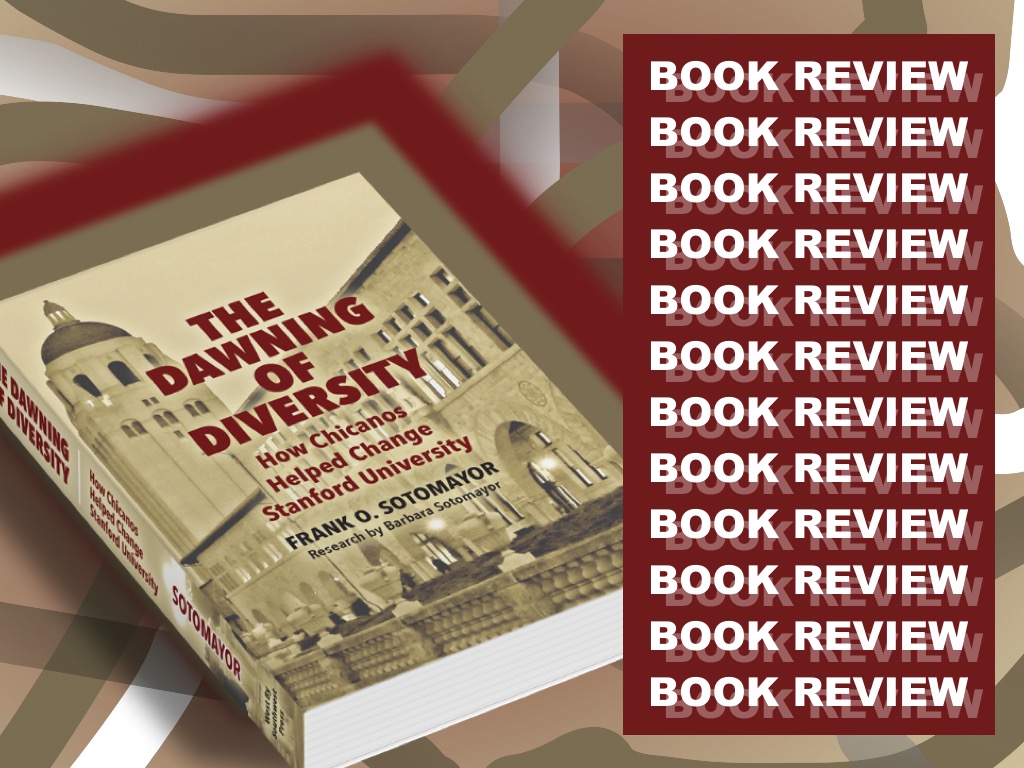When Frank Sotomayor M.A. ’67 arrived at Stanford in the 1960s, he was one of only a few Mexican American students at the University. Years later, after graduating with a master’s degree in journalism, he chronicled how several classes of Chicano students changed Stanford’s landscape over the following decade, in an era when people of color were disadvantaged in admissions and higher education.
Sotomayor’s 2022 book, “Dawning of Diversity: How Chicanos Helped Change Stanford University,” documents systemic racism in higher education in the 1960s and later decades. It also spotlights students and faculty members whose initiative contributed to Stanford’s increased diversity today.
Sotomayor collected data on Mexican American students of the early ’70s, including information about their family backgrounds, how they were recruited and their evolution through four years at the University. Central to his argument are inequities in the admissions system — something especially intriguing to present-day readers, after the Supreme Court reversed affirmative action last June.
Sotomayor highlights disadvantages faced by applicants of color: In 1960, the legacy system was in full swing, recruitment targeted high schools with children of Stanford alums and students of color had less access to college preparatory courses — to an even greater degree than today.
Crucially, Stanford had no quotas for white admits, but sought to limit admissions for women, Jewish students and students of color. The student bodies of most leading private universities were over 95% white until the mid-1960s, Sotomayor writes in “Dawning of Diversity.”
“Stanford’s status quo continued a long-standing set of policies and practices that produced institutional inequity in undergraduate admissions,” he concludes.
Sotomayor said he wanted to raise awareness of instances of racism in Stanford’s history. This began with the University’s first president, eugenicist David Starr Jordan, and Lewis Terman, a professor of education who developed the Stanford-Binet IQ test. The test, which was meant to diagnose developmental and learning disabilities in children, was “terribly culturally biased,” Sotomayor told The Daily.
Although the book focuses on the past, Sotomayor takes his research and activism into the present. He points out limitations in Stanford’s diversity today, as presented in data from the IDEAL dashboards.
“18% of undergraduates are Latino, and that’s good,” Sotomayor said. “But when you go to graduate students, that drops dramatically, to only 9%.”
Sotomayor said the Stanford faculty is also lacking in diversity, with only 5% being Latino and less than 1% being Native American.
“There is a lot of work that has to be done, and Stanford has a lot of excuses,” Sotomayor said. “If Stanford wants to get more diversity among graduate students and faculty, it’s going to have to make that a priority. Not lip service, but a priority year after year.”
Besides relevant discussions on diversity of the student body, “Dawning of Diversity” tells deeply human stories about Mexican American students’ struggles and growth.
“I really wanted to get inside the head and memories of students of that period,” Sotomayor said. “I wanted to feel their pain, feel their joy and make it more of a human story.”
The stories Sotomayor told in the book certainly moved me. One I found particularly compelling was that of Albert (Al) Milo Jr. ’73. While involved in movements on Mexican American rights and Vietnam War protests, he was questioning his sexuality.
Milo absorbed “homophobic remarks and innuendos by male students” and witnessed how the campus was not “ready for an openly gay professor.” He did not realize Arturo Islas, an English professor immensely popular among students, was gay until after Milo left Stanford.
The son of a farmworker, Milo experienced culture shock coming to the University.
“Being around so many super smart people raised the bar for me in terms of what I expected of myself,” Milo says in the book.
Sotomayor does justice to stories like Milo’s, all of them equally rich, personal and specific to being a Mexican American student at Stanford during this time.
“I wanted to show how they left a legacy for Stanford, what they did after Stanford and how the education was helpful,” Sotomayor said.
“Dawning of Diversity” was as much a masterful narrative as a piece of serious scholarship. Sotomayor incorporated more than 800 footnotes in the book to ensure it was “academically sound.”
Reading “Dawning of Diversity” was an eye-opening experience for me. Delving into each individual’s narrative, I can’t help but see similarities to our student life today. Stanford students today also explore multiple identities, feel culture shock and engage in community activism. Decades have passed, but immense wisdom remains in these unearthed stories.
Editor’s Note: This article is a review and includes subjective thoughts, opinions and critiques.
